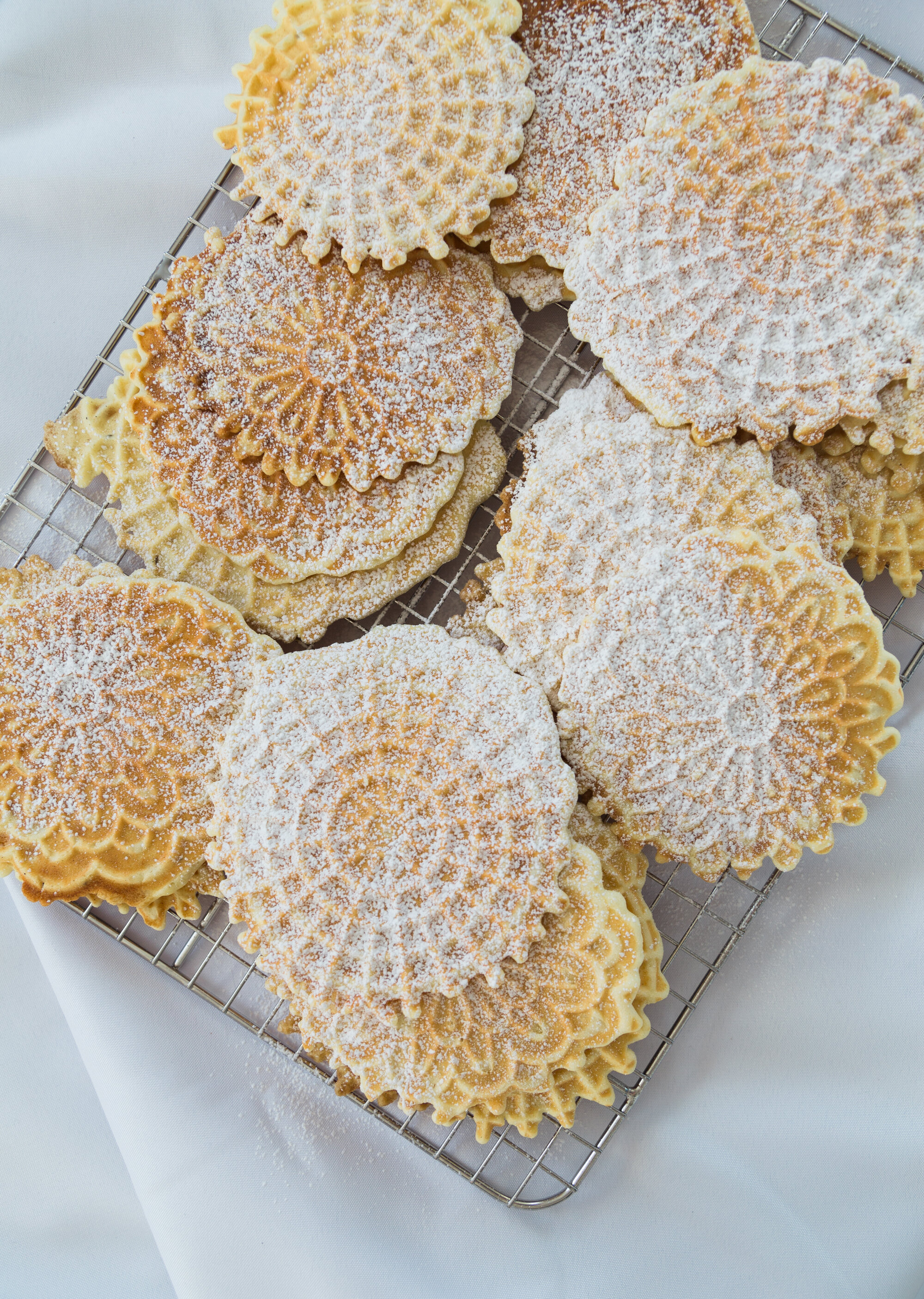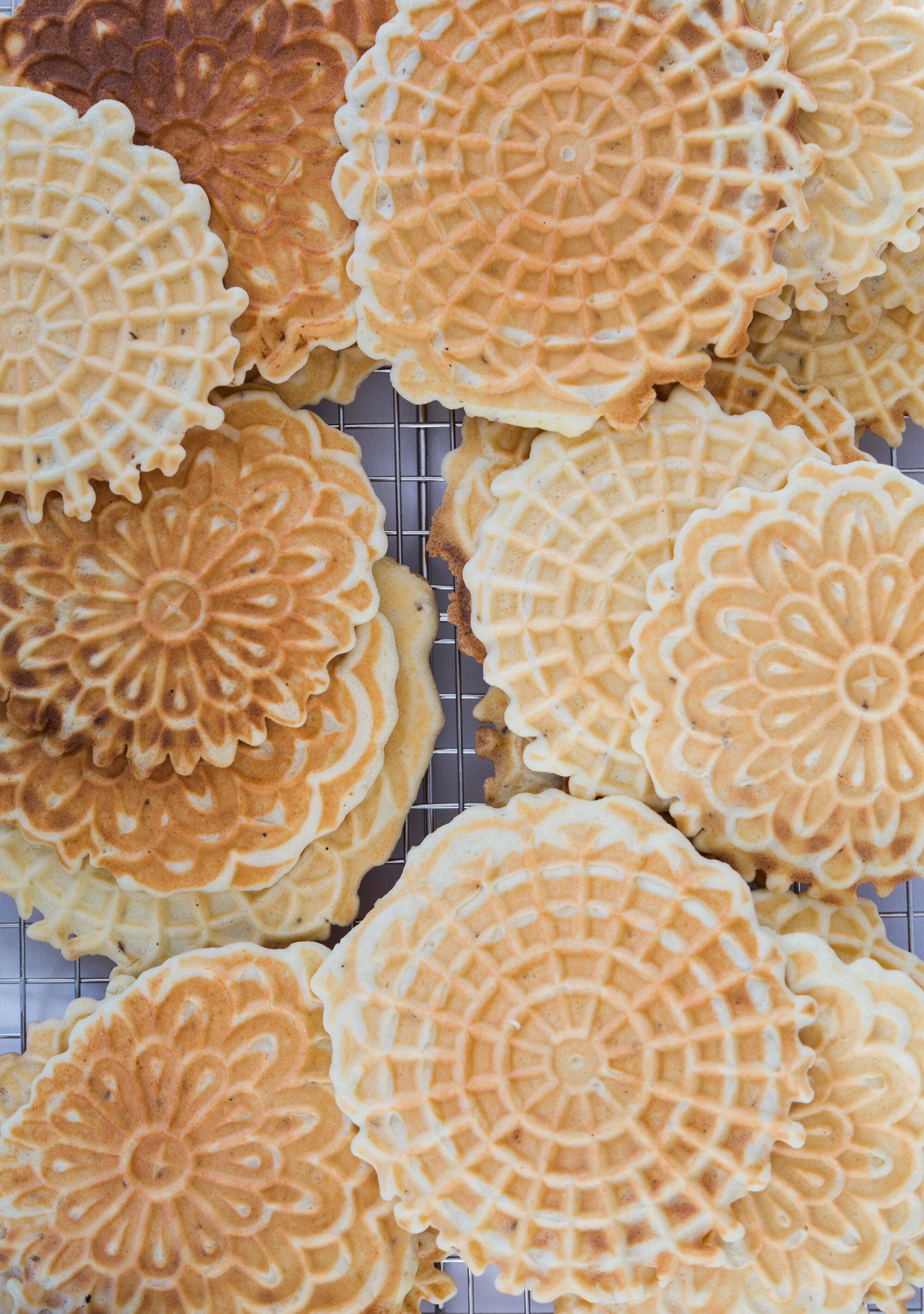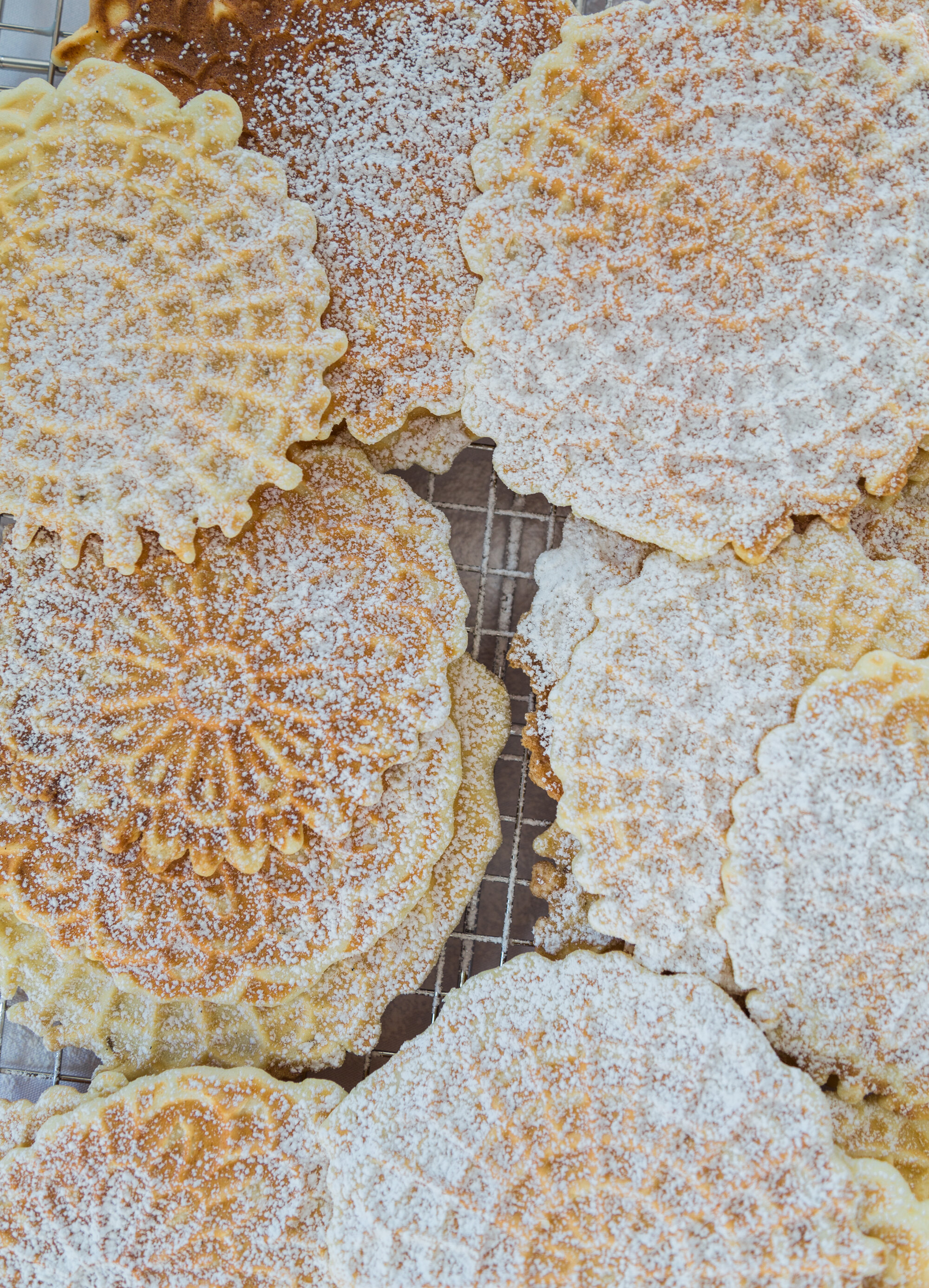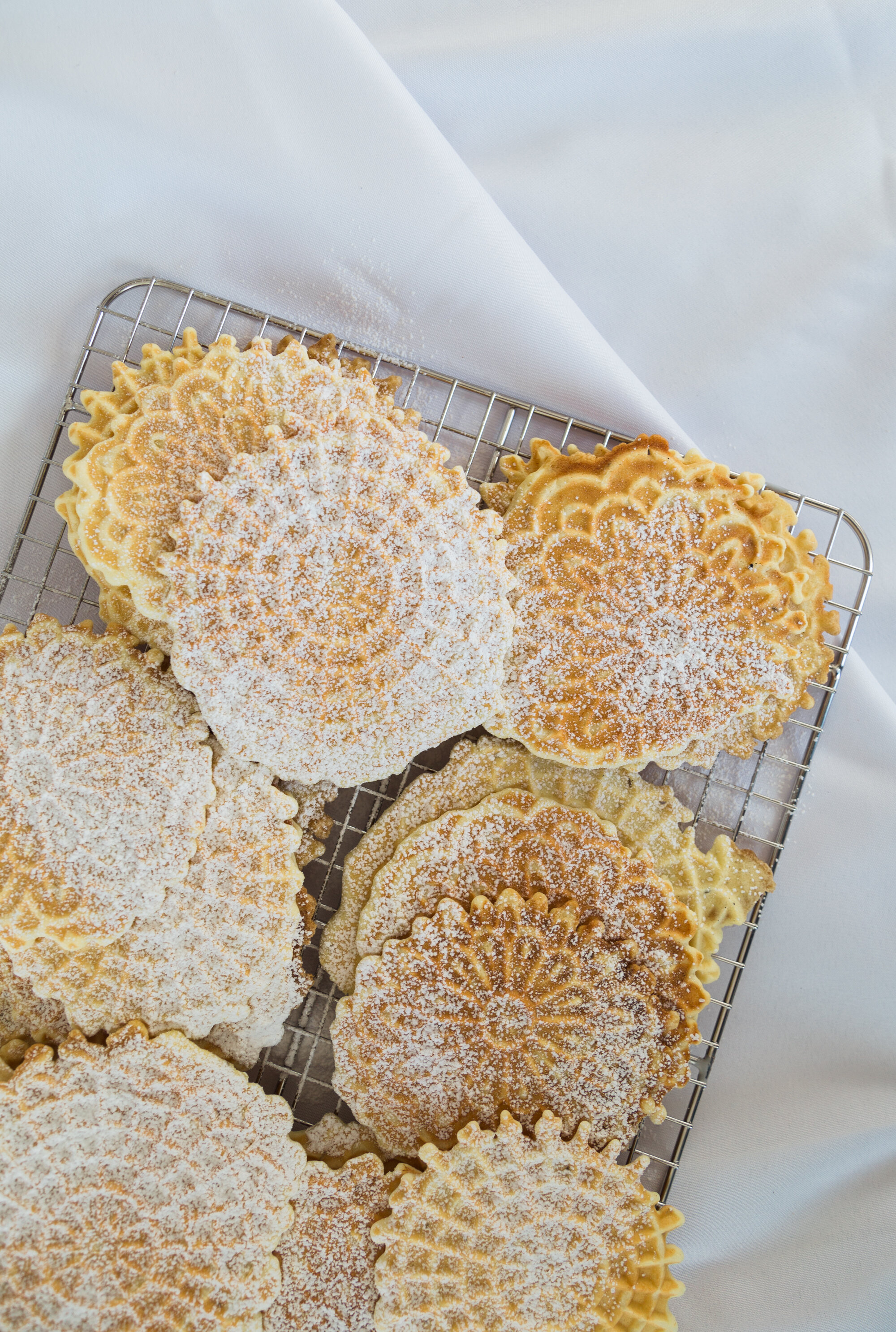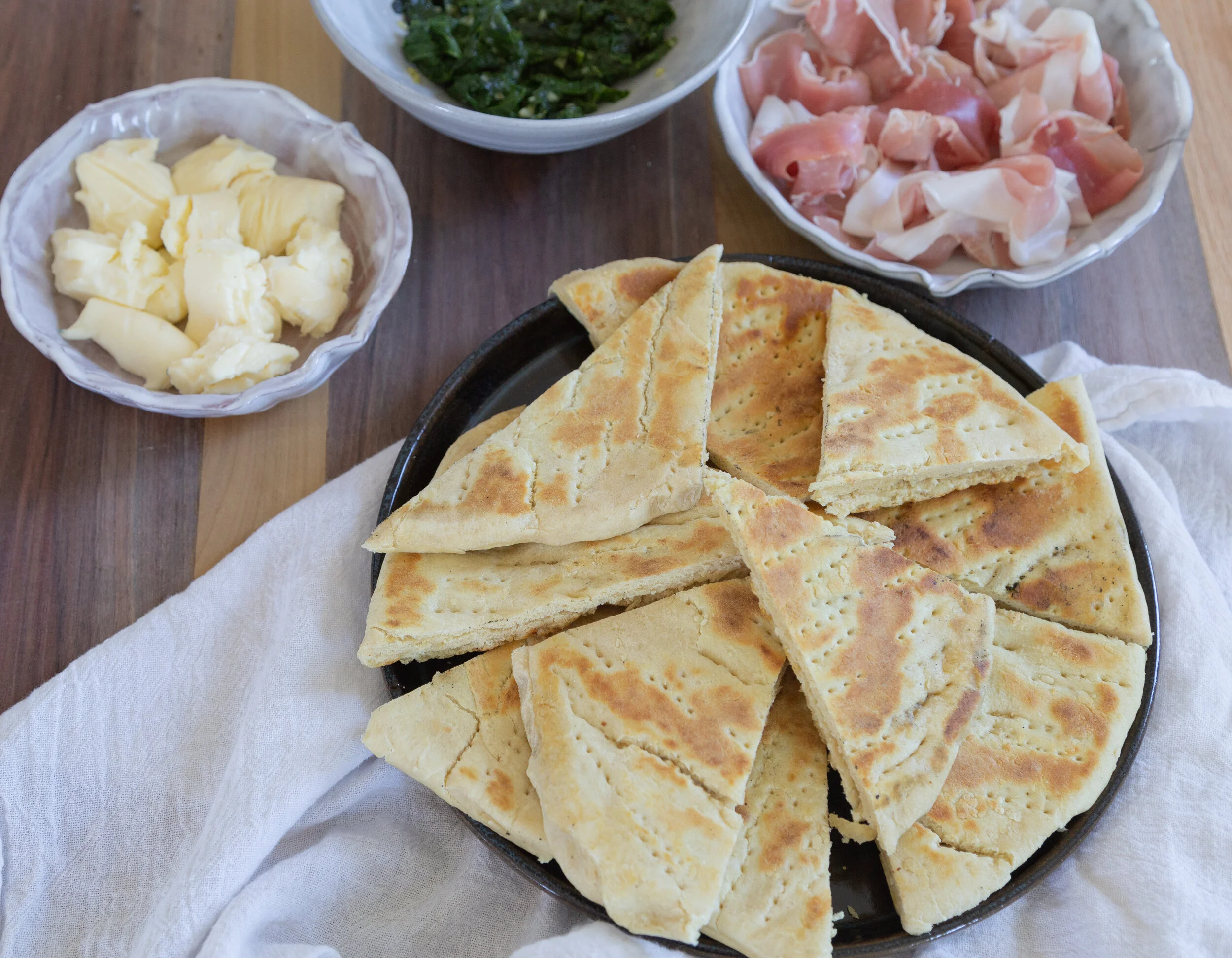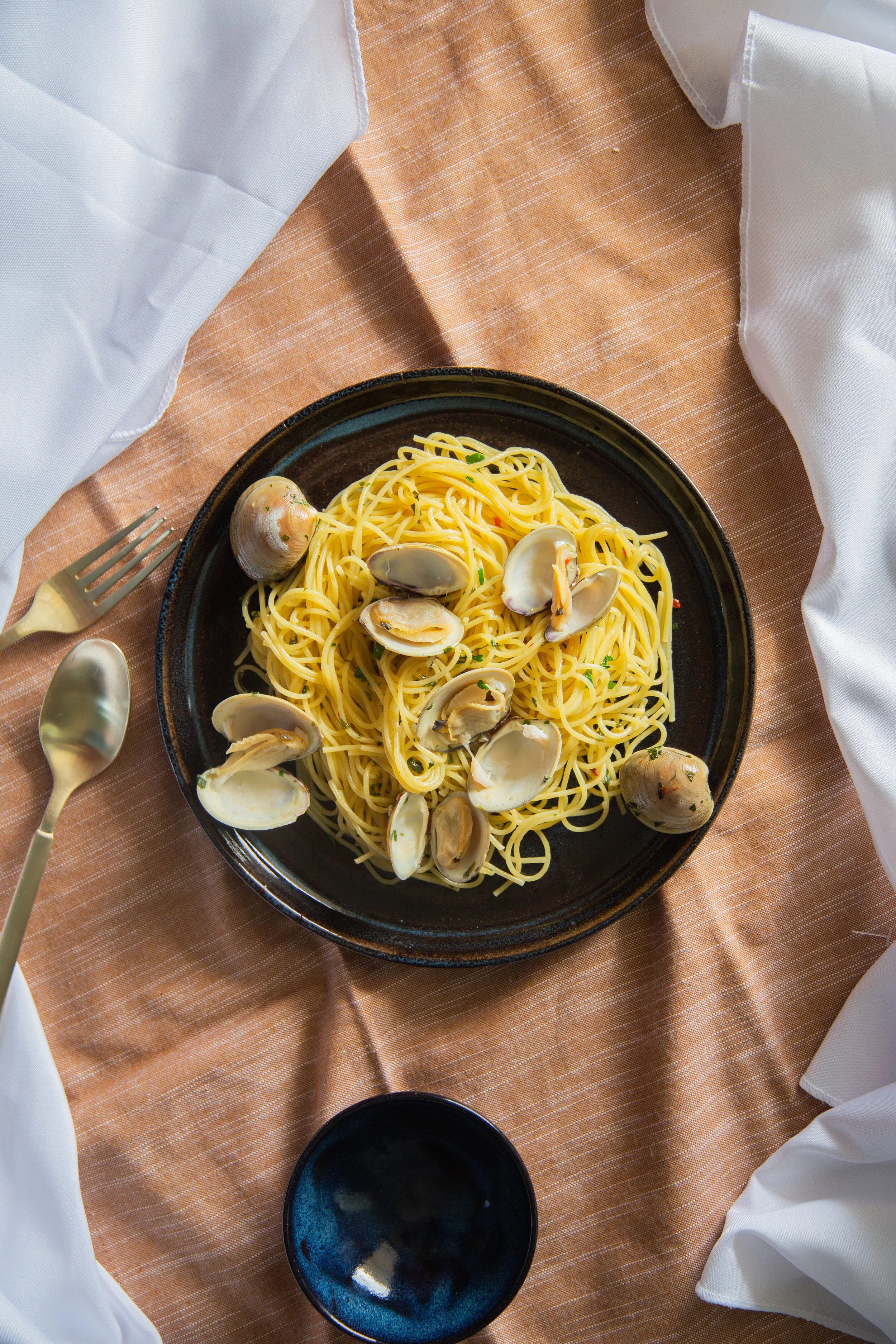Pizzelle: The World's First Cookie
“You know your great grandmother (bisnonna) was notoriously an awful cook, right?” giggled my grandmother on the phone. “I was no chef, either… but she was famously awful in the kitchen. But… there was one thing she mastered. Cookies.”
I can’t lie to you. A big part of why I wanted to do my Roaming Italy project was to reconnect with my Italian ancestry. My Calabrian grandfather passed away just months before my first trip to Italy in 2014, and I can’t tell you how dearly I miss his ridiculous laughter and his tales of growing up in the Italian-American steel town he called home. The man had the most buoyant laughter, lifting so high that he could barely catch his own breathe. When we’re young we don’t notice the little things that make our elders real, nuanced humans. Now, I hold those little details close to heart.
As soon as I heard that cookies were the one delicacy that ran strong in my familial ancestry, I immediately knew the recipe I’d do next! Pizzelles.
A Nostalgic Taste
Pizzelles are the one holiday treat my mother and I would make together since as long as I could remember. No Christmas Eve dinner would be complete without a tall stack of our famous light, crispy pizzelles. My mother would whip out the heavy iron from the very bottom of our kitchen cabinets, its familiar snowflake design ready to take on the batter we whipped up by hand. I was never allowed to peel the thin baked cookies from the iron, so it really does feel like a grown up move to have that same iron in my home today!
Dipped in coffee, served with ice cream, shaped into a tubular shape for cannoli or a waffle cone, dusted with cinnamon, powdered sugar, layered with nutella or sprinkles… a fresh pizzelle is good with everything. My favorite? Dipped in dark chocolate and covered with pistachios. Try it with a cup of coffee or espresso and thank me later!
Pizzelles - The First Cookie
Unbeknownst to me when choosing the cookie as an early recipe in the Roaming Italy project… but it turns out that the pizzelle is one of the most ancient styles of cookies in the world! (I swear, I had no clue of its significance… but hey, no complaints, I’ll take it!)
In ancient Greece and Roman cultures, there is evidence of flatbreads being stamped/baked with geometric patterns in the same size and manner as the pizzelle we know today. The closest relative of the pizzelle on record is the ancient Roman crustulum, a flatbread cooked in a pancake pan and on top of a craticula… which is reminiscent of a barbecue grate cooker. Similar variations go by the name ferratelle in the Lazio region and cancelle in Molise too.
After doing some deep research, I also found that St. John Chrysostom (dating back to 347 AD) wrote that his flatbread was “sealed” - which historians note as being stamped with a cross or some other kind of branded/baked religious design. Some of the most unique looking flatbreads of the ancient world used tiny stamps in repeated patterns to create an impressive display of intricate work. Others were large and embellished with crosses and other religious patterns to be used as the Holy Eucharist in mass.
Later, iron designs became tied to familial life. Centuries ago, Italian families would have irons specially made with family crests, celebratory dates and other meaningful designs that aligned with their values and familial ties. (This makes me really want to find a custom made pizzelle iron with my Italian family crest! Any one have any leads?) These specialty pizzelle irons were, and still are, considered to be a prized possession passed down through generations. So, of course, having my mother’s iron in my kitchen makes me feel all the warm and fuzzy feelings!
Snakes, Branches & A Cookie Claiming Rivalry?
Two small villages within the region of Abruzzo claim to have created the original pizzelle cookie recipe we love today. And each have a unique way of celebrating the tradition of pizzelles at the dinner table.
Perhaps the most terrifying traditions comes from the small town of Cocullo, in the Province of L’Aquila, where the “Festival of The Snakes” or “Feast Day of San Domenico” is celebrated. The legend goes that the village was once riddled with snakes. (Yeah, a total nightmare!) Benedictine monk San Domenico, now the town’s patron saint, cleared out the local fields and the beasts stayed clear of the village ever since... and, of course, pizzelles were created to celebrate. Today, the festival is held every May 1st and the town celebrates by carrying the statue of San Domenico di Sora through the town, covered in live snakes. (Yikes!)
In Salle, the other rival pizzelle-claiming village, located in the Province of Pescara, pizzelles aren’t tied at all to serpents! Instead, pizzelles are hung from branches as an offering in celebration of Saint Beato Roberto every July. Imagine these snowflake-esque cookies hung from every tree. Kind of magical and whimsical, right?
Now… that being said, many other cultures outside of Italy have their own similar form of pizzelles too! Perhaps the closest in appearance is the Norwegian Krumkake. Its intricate ironed designs are close cousins to the pizzelle, but are curled and filled with fruit or ice cream.
Anise & Irons - The Process of Pizzelle
I think anise might be one of the most polarizing flavors out there. You either love it or hate it, and I’ll admit… I’ve switched parties. A delicate dusting of anise flavoring is heaven. (My younger self would have keeled over reading this!) No matter which side of the aisle you find yourself in… just know that although traditional recipes use anise seeds, you certainly don’t have to! Swap it out for more vanilla (like my mother used to do for me!), lemon or cinnamon. This cookie’s got range, baby!
A pizzelle batter is simple… sugar, eggs, flour, butter and flavoring. And a little goes a long way, too! The process of baking is even more simple. A spoonful of your sweet batter plopped in the middle of your iron plates and pressed closed for a few seconds… voila! Just keep in mind, the first few cookies will be a good test of just how long you should let your iron do its thang. You may burn a few initally, but hey…
Old world style pizzelle irons are made of of cast iron plates that require a special process of rolling the batter in a figure eight shape, held over a flame and turned. Modern pizzelle irons (like the one I have) are typically electric and easy breezy to use, in comparison. Think of it like the cousin to a classic waffle iron!
When baking your cookies in the iron, carefully peel the treat off of the snowflake design when still warm. Here’s where you can be creative. If you’re a traditionalist like me and hunting for a crisp cookie… rest the warm cookies on a cooling rack, spaced out and without stacking. If you’re feeling fancy, you can take those hot cookies and mold them into whatever shape you’d like. If you’re making a little waffle cone, simply mold them over the bottom of a glass bottle and let them cool!
P.S. A good trick my mother passed on to me: in between each batch, douse a paper towel with cooking oil and wipe to keep the irons clean. Or spritz some cooking spray over the iron in between batches. The little burnt bits come out like a breeze!
Pizzelle Della Bisnonna
Pizzelle
ROAMING ITALY PROJECT
Makes about 30 cookies
3 eggs
3/4 cups sugar
1 tsp vanilla extract
1 tsp anise seed
1 tsp grated lemon zest (optional)
1/2 cup melted butter cooled to room temperature
1 3/4 cups all purpose flour
2 tsp baking powder
1/2 tsp salt
Powdered sugar (optional garnish)
Region: Abruzzo
Preheat your pizzelle iron.
Beat together your eggs and sugar until fluffy.
Add vanilla, lemon zest (optional) anise seeds and butter. Beat until blended.
In another bowl, whisk together flour, baking powder and salt.
Fold in your dry ingredients bit by bit, until the mixture is smooth. (Tip: If your batter is too thick, add a dash of milk!)
Place a spoonful of batter in the center of your iron. You’ll need to eyeball this as every pizzelle iron is different!
Close your iron and bake until golden brown. Mine needs to stay closed about 30 seconds... yours may differ!
Remove cookies from the iron and transfer to a cooling rack. Be sure to space out your cookies so they crisp up.
Once your cookies have cooled and crisped up, feel free to dust them with powdered sugar, or whatever garnish you prefer!
Just For Fun
This adorable mini pizzelle maker is so cute (and affordable!)
I love the designs on this studier option too!
Pizzelle inspired berets? YES PLEASE.
Do you have a family sweet you look forward to making? What other Italian sweets would you like to see covered in my Roaming Italy Project?
Be sure to check out what I’ve learned/cooked so far this year as I explore Italian recipes, regions, culture and more.
And also make sure to tag any of the recipes you also end up making at home with #roamingitaly. I’d love to see what you’re making!
